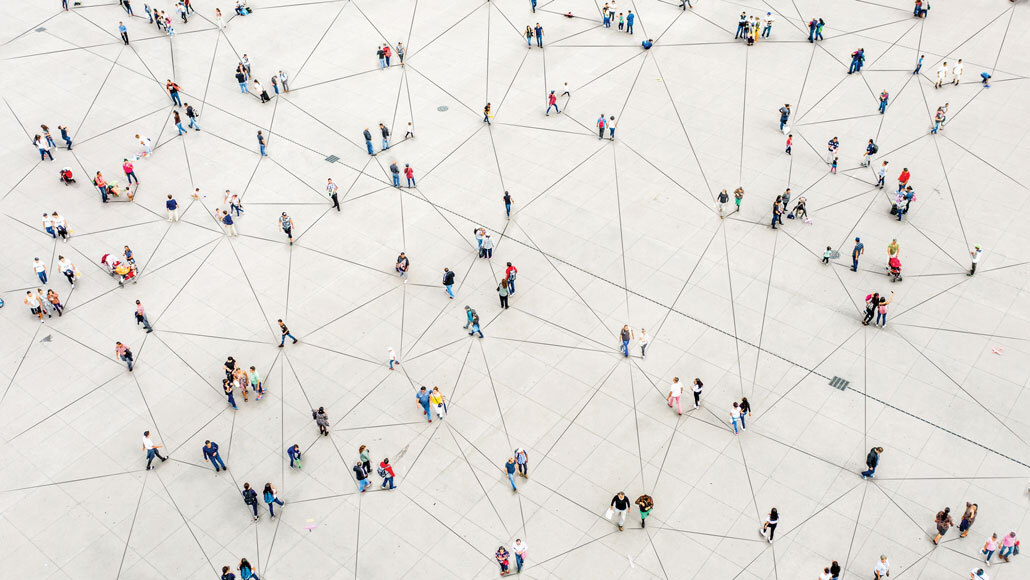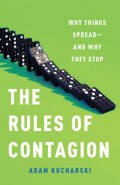All kinds of outbreaks, from COVID-19 to violence, share the same principles
Adam Kucharski discusses his new book The Rules of Contagion

The basic rules of a disease outbreak can help explain how other things spread among people, including ideas and violence.
Orbon Alija/E+/Getty Images
- More than 2 years ago

The Rules of Contagion
Adam Kucharski
Basic Books, $30
Epidemiologists like to say, “If you’ve seen one pandemic, you’ve seen … one pandemic.” But behind each outbreak lie core principles that help explain why the outbreak began, why it grew, why it peaked when it did and why it ended. In The Rules of Contagion, mathematician and epidemiologist Adam Kucharski of the London School of Hygiene & Tropical Medicine outlines those principles and shows how they apply beyond infectious disease, to the spread of ideas, financial crises, violence and more.
Kucharski hardly mentions the novel coronavirus sweeping the globe. He was just wrapping up final edits when the first cases of COVID-19 appeared in Wuhan, China. But the book still feels extraordinarily prescient. Kucharski provides context for readers to understand the current pandemic, as well as a framework for thinking about other types of contagious spread. Science News spoke with Kucharski about the principles of contagion, disease modeling and misinformation. The following conversation has been edited for length and clarity.
SN: Your book looks at the principles of contagion and how they apply beyond infectious diseases. Why is it useful to transport those ideas to other fields?
Kucharski: I’ve noticed that the same mistakes get made repeatedly across fields. For example, after the 2008 financial crisis, a lot of people realized that the network structure between banks and loans and exposure to risk was very similar to a lot of the network features that caused problems with sexually transmitted infections in the 1970s and ’80s. If there are a lot of “loops” in the network, with people connected to each other in multiple ways, it makes it harder to stop the spread. If the network is structured so that highly connected individuals are disproportionately linked to less-connected individuals, it can result in an outbreak that spreads slower at first, but eventually reaches more of the network. Pre-2008, the financial network had both of these features.
It’s also important to understand the underlying network. When looking at violence, it might be tempting to think the events are random, but there is often a series of connections that link them, and targeting these links with interventions can help prevent future incidents.
SN: You write that we need to separate the features that are specific to a particular outbreak from the underlying principles that drive contagion. What are those principles?
Kucharski: There are four factors that are worth bearing in mind. The first one is duration — how long people are infectious for. The second is what people do while they’re infectious: the opportunities for contagion. Another feature is what I call the transmission probability — the chance something actually gets across during an interaction. Then the final important one is susceptibility. If you have the virus or if you try to spread an idea, what is the chance that someone is susceptible?
SN: Modeling, which is the focus of your book, has played an important role in the coronavirus response. But models aren’t perfect. How do we prevent inaccurate predictions from eroding people’s confidence in modeling?
Kucharski: It helps to get away from the idea that all models are trying to make an exact forecast of what will happen in a month’s time or two months’ time. I see models as a way of clarifying our thinking about how the process works. Every time you see someone in the media claiming they have a solution to COVID, they are implicitly relying on a model. They might not outline what that model is, but they are making assumptions about how transmission functions, and they’re making assumptions about how their proposed measure will influence transmission. The advantage of a model is it lays out those steps very clearly, and it means that people can criticize them.
SN: After the 2016 U.S. presidential election, the spread of misinformation gained a lot of attention. How have social media platforms tried to combat this in response to COVID-19?
Kucharski: We’ve seen some quite dramatic changes in terms of what’s being limited. A few years ago, the focus was on attempting to remove all the harmful content. The problem with trying to reactively remove all harmful content is that online outbreaks spread so quickly — it’s difficult to keep up with transmission. A more effective approach may be to reduce susceptibility. We’re seeing a lot more focus on preemptive messaging. If you type COVID into a search bar on most tech platforms, you will have a huge amount of credible information before you find anything that might lead you down some sort of rabbit warren into unreliable information. This is one of the first times that we’ve really seen that level of blanket preempting across multiple platforms — Google, Instagram, Twitter, Facebook.
SN: Technologies like contact tracing apps could help curb the spread of coronavirus, but they also raise privacy concerns. How do we strike a balance?
Kucharski: If you look at countries in Asia that have been very good at contact tracing, often the surveillance data is far more detailed. In Korea, they have access to people’s credit card transactions, to their cell phone locations. We haven’t seen anything near that scale in Europe or the U.S. If we’re talking about learning from these countries, we have to look at what they’ve done and then decide what elements of that we do or don’t want to introduce. Do you want to give up more data in the possibility that disease control could work better and you could get back to elements of normality quicker, or do you want to protect privacy with the knowledge that it may mean that we’d need some additional physical distancing in place? We need to have a really frank public discussion about what we think of appropriate trade-offs.
Buy The Rules of Contagion from Amazon.com. Science News is a participant in the Amazon Services LLC Associates Program. Please see our FAQ for more details.

Trustworthy journalism comes at a price.
Scientists and journalists share a core belief in questioning, observing and verifying to reach the truth. Science News reports on crucial research and discovery across science disciplines. We need your financial support to make it happen – every contribution makes a difference.







